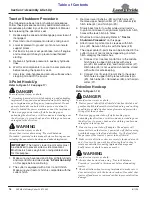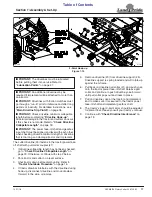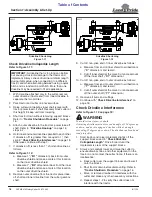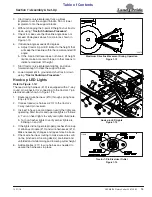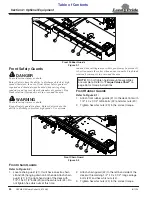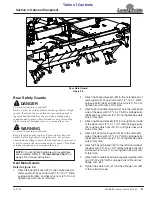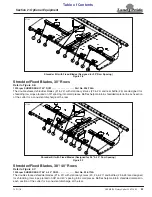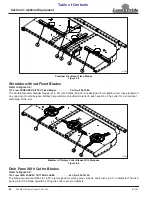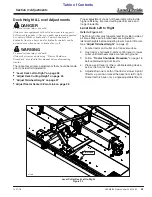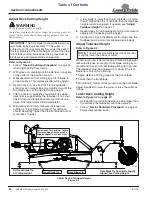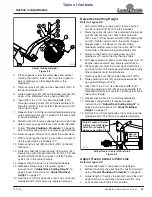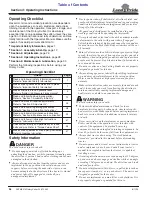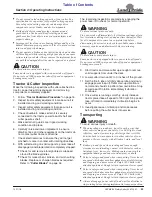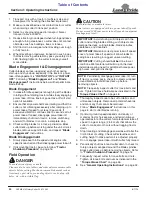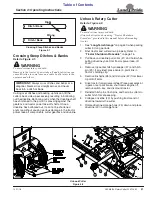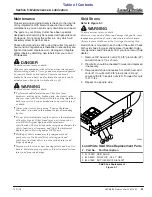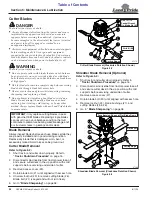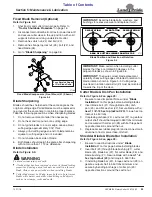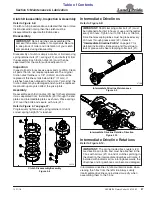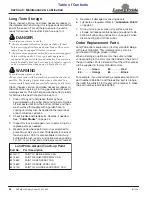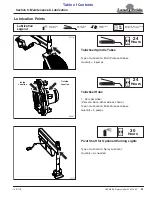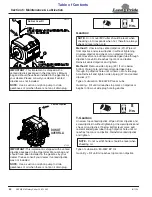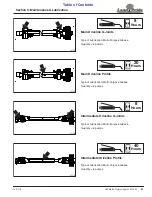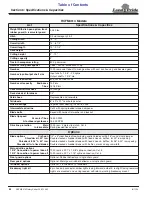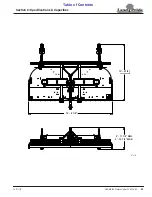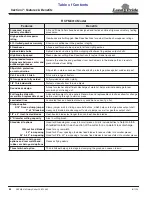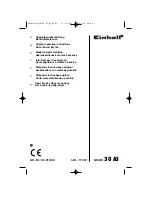
Section 4: Operating Instructions
RCFM4014 Rotary Cutter 326-730M
8/11/14
30
1.
Transport only with a tractor of sufficient size and
horsepower for handling the attached implement.
2. Make sure driveline does not contact tractor or cutter
when raising cutter to transport position.
3. Select a safe ground speed to transport. Never
transport above 20 MPH.
4. Reduce tractor ground speed when turning and leave
enough turning clearance so cutter does not contact
obstacles such as buildings, trees or fences.
5. Shift tractor to a lower gear when traveling over rough
or hilly terrain.
6. When traveling on roadways, transport in such a way
that faster moving vehicles may pass you safely. Use
LED flashing lights on the cutter to make yourself
more visible.
Blade Engagement & Disengagement
Cutter blades can lock-up against each other during
start-up and shut-down especially if the tractor’s power
take-off engagement is
“INSTANT ON”
and
“INSTANT
OFF”
. Following
instructions below will help eliminate
blade lock up.
Blade Engagement
1.
Increase throttle speed just enough to get the blades
rotating without stalling tractor while slowly engaging
power take-off. Use tractor’s power take-off soft start
option if available.
2. Ensure that all power shafts are rotating and that the
cutter is not vibrating excessively after ramping up to
power take-off speed for at least 3 seconds. If
excessive vibration continues after 3 seconds at full
power take-off speed, disengage power take-off
immediately, shut down tractor, remove switch key,
and wait for blades to come to a complete stop.
3. Check cutting blades for a lock-up situation. Block
cutter deck up before working under the unit. Unlock
blades, remove support blocks, and repeat
instructions.
Blade Disengagement
1.
Slowly decrease throttle speed until engine idle
speed is reached and then disengage power take-off.
2. If dismounting tractor, be sure to follow
Field Operation
DANGER
!
To avoid serious injury or death:
Clear area to be cut of debris and other unforeseen removable
objects before cutting. Mark non-removable hazards such as
tree stumps, post stubs, protruding objects, rocks, drop-offs,
holes, etc. with a visible flag.
CAUTION
!
To avoid minor or moderate injury:
Some tractors are equipped with two power take-off speeds.
Do not exceed 1000 rpm power take-off speed or equipment
1.
Thoroughly inspect area to be cut for debris and
unforeseen objects. Remove all potential hazards
and mark any that cannot be removed.
2. Follow
instructions on this
page to start cutter blades turning.
3. Optimum ground speed depends on density of
material, tractor horsepower, and terrain. Always
operate tractor at the cutter’s full-rated power take-off
speed in a gear range (2 to 5 mph) that allows the
cutter to make smooth cuts without lugging tractor
down.
4. Stop traveling and disengage power take-off after the
first 50 feet of cutting. Check cutter levelness and
cutting height to make certain it is adjusted properly.
5. Do not engage power take-off with cutter fully raised.
6. Periodically shut tractor and cutter down to check for
foreign objects wrapped around the blade spindles.
Block cutter deck up before removing objects. Refer
to
7.
Frequently inspect cutter for loose bolts and nuts.
Tighten all loose bolts and nuts as indicated in the
“Torque Values Chart”
8. See
“General Operating Instructions”
IMPORTANT:
Avoid striking solid objects with the
IMPORTANT:
Maintain correct power take-off speed.
Loss of power take-off speed will allow blades to
swing back resulting in ragged, uneven cutting.
IMPORTANT:
Cutting should
not be
done in wet
conditions. Wet material will build up on the deck
underside creating need for additional horsepower,
high wear, and poor discharge.
NOTE:
Periodically disengage power take-off, turn
off tractor, remove key & check for objects wrapped
around blade spindle. Block deck up before
removing objects.
NOTE:
Frequently inspect cutter for loose bolts and
nuts. Tighten all loose hardware as indicated in the
“Torque Values Chart”

